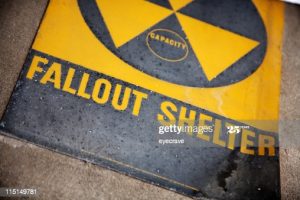The Harrowing Reality of Nuclear Warfare
Nuclear war, characterized by the deployment of devastating weapons such as atomic bombs, hydrogen bombs, and other advanced arsenal, represents one of the gravest threats to modern civilization. The evolution of warfare technology has only amplified these threats, leading to a heightened global tension over the potential use of nuclear weapons.
Recent international events have underscored the looming risk of nuclear conflict, a prospect that alarms everyone. Yet, despite the horrific nature of nuclear warfare, history and survival stories suggest that survival is possible, even under the most dire circumstances.
A Beacon of Hope: The Story of Tsutomu Yamaguchi
Tsutomu Yamaguchi’s incredible survival through the bombings of Hiroshima and Nagasaki, living to the age of 93, serves as a testament to human resilience. His story provides hope that survival is feasible even in the face of nuclear devastation.
Understanding and Surviving a Nuclear Blast
A nuclear explosion is a multi-stage event, encompassing:
- A blinding flash of light.
- A wave of intense heat.
- The release of nuclear radiation.
- A massive fireball.
- A powerful blast of air.
- The subsequent radioactive fallout.
Identifying the Zones of Impact
The blast zone of a nuclear explosion is typically categorized into three distinct areas:
- Severe Damage Zone: Survival chances are minimal.
- Moderate Damage Zone: Varying degrees of destruction and higher survival possibilities.
- Light Damage Zone: Highest chance of survival.
Essential Steps for Survival
1. Finding the Right Shelter
“Get inside, stay inside” is a crucial mantra in the event of a nuclear threat. The best course of action is to seek immediate shelter, preferably in a basement or bunker. The deeper and more central you are within a structure, the better your protection against the blast and fallout.
2. Fleeing Is Not an Option
Attempting to flee, especially by car, can expose you to greater dangers. A vehicle offers little protection against a nuclear blast and its after-effects. The safest course of action is to remain sheltered in place.
3. Protecting Against Fallout
Surviving the initial blast stages is only part of the challenge. Avoiding exposure to radioactive fallout is critical. If contact occurs, remove contaminated clothing, place it in a plastic bag away from you, and shower with soap and water, avoiding hair conditioners.
Post-Attack Measures
Once in a shelter, it’s crucial to stay informed through reliable news sources for instructions on medical attention and potential evacuation plans.
Conclusion
While a nuclear attack is a harrowing scenario, understanding these survival strategies can significantly increase your chances of making it through. Remember: “Get inside, stay inside, and stay tuned.”
We invite your thoughts and comments below and encourage you to explore our website for more comprehensive step-by-step survival guides.


